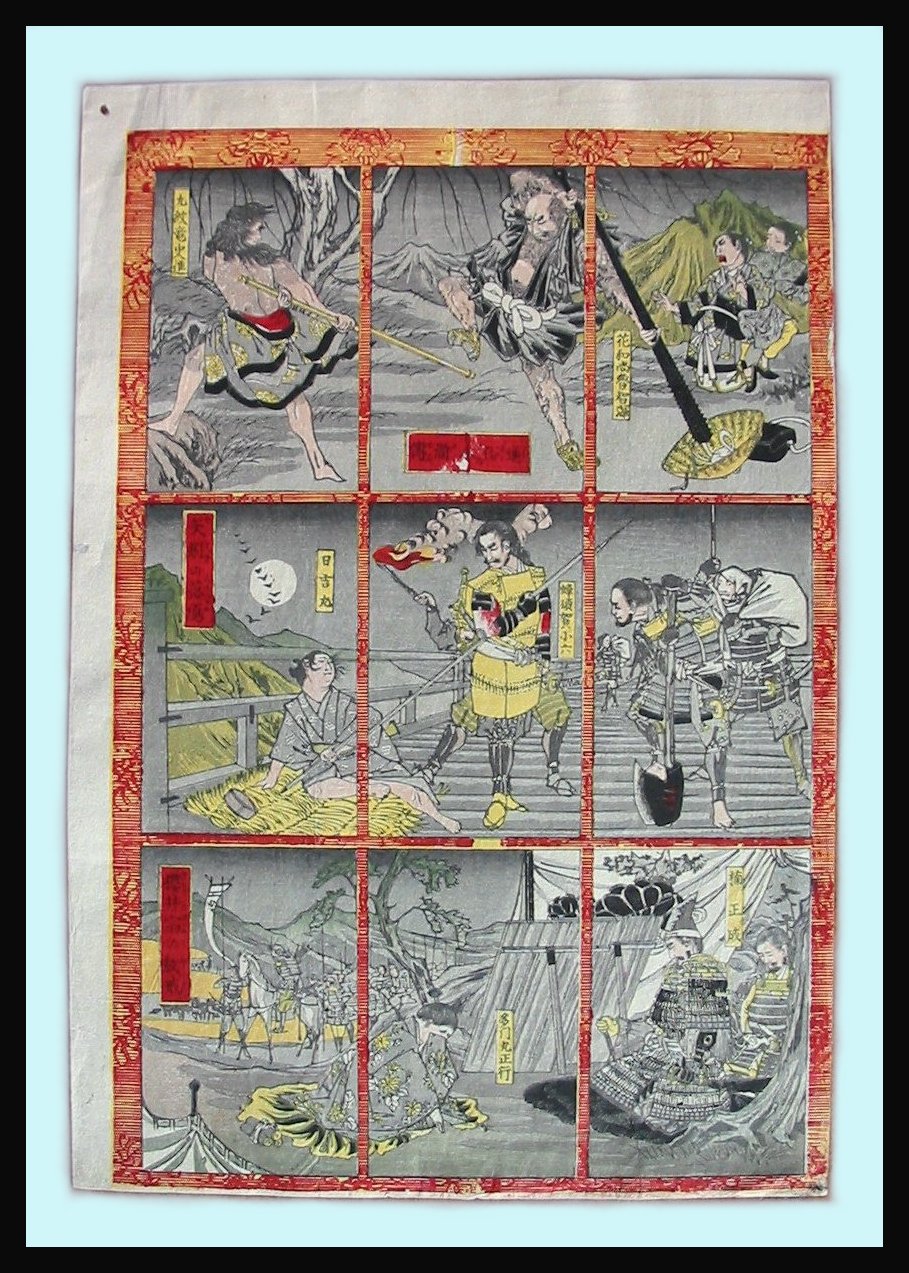

|
Ukiyo-e Prints浮世絵版画 |
|
Port Townsend, Washington |
|
ANONYMOUS MEIJI |
|
作者未詳 |
|
Date: Circa 1870 (but this is just a guess) |
|
Size: 14 1/2" x 9 7/8" |
|
Publisher: Unidentified |
|
版元: 未詳 |
|
はんもと: みしょう |
|
|
|
Originally priced at $235.00 Now on sale for
$160.00 |

|
|
|
|
|
MASATSURA BEFORE HIS FATHER MASASHIGE
Masashige (? - 1336) was a supporter of the 96th emperor, Go-Daigo (後醍醐 or ごだいご), who was determined to consolidate power into his hands. Through a combination of religious and military alliances the emperor sought to destroy the power of the Ashikaga shogunate. In the Taiheiki which is based on true historical events Go-Daigo dreamt that Masashige would help him accomplish his goals.
The emperor "...summoned Masashige, who assured him that by means of bold and skillful stratagems the armies of Kamakura would be destroyed. The stalwart warrior also promised the emperor that even though battles might be lost, the loyalist cause would prevail so long, as he, Masashige, lived." Later Go-Daigo was captured, but in time he escaped and was restored to his position. "For his services in bringing about the restoration, Masashige was appointed governor... of Kawachi Province [河内国]..." Often outnumbered and low on supplies Masashige prevailed because he was "...a brilliant military tactician."
In the scene shown above Masashige is instructing his oldest son, then only 10 years old, to remain loyal to the emperor. The father is convinced that the battle is about to fight will be his last. "The Taiheiki account of this battle tells us that Masashige knew before it began that victory was impossible and that he faced certain death. And indeed, after many hours of ferocious battling in a sweltering heat, Masashige and his brother withdrew from the battle and committed suicide."
"In later centuries Masashige was elevated in folk mythology to the position of supreme paragon of imperial loyalty. He was portrayed in primary school textbooks before World War II as the finest of all models for Japanese youth as they prepared for lives of service to throne and country." (1)
Eleven years after his father's death Masatsura rallied his partisans to drive out the Ashikaga forces. Initial successes forced the shogunate to send a huge army of 60,000 against him. He "...defended himself valiantly at Shijōnawate [四條畷 or しじょうなわて] (Kawachi), but as his army was quite inferior to that of his enemies, he was overwhelmed and perished with all of his partisans. He was only 22 years old. A temple (Shijōnawate-jinju) has been erected on the spot where he died." (2)
There is a triptych designed by Toshikata from ca. 1890 showing the same scene where Kusunoki Masashige (楠木正成 or くすのきまさしげ) is instructing his young son Masatsura (正行 or まさつら) before the battle of Minatogawa in 1336.
1. Kodansha Encyclopedia of Japan, entry by H. Paul Varley, 1983, vol. 4, p. 321. 2. Historical and Geographical Dictionary of Japan, by E. Papinot, Charles E. Tuttle Co., 1992, p. 334. |
 |
||
|
|
 |
|
 |
|
Direct purchase may be made through check or money order or by payment through PayPal.
Contact us if you are interested. |